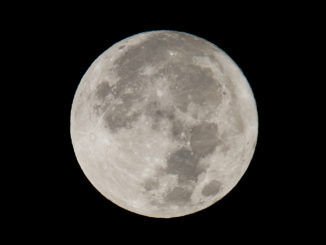
New readings from the European Space Agency’s Rosetta mission have challenged the theory that comets brought water to Earth in a series of cataclysmic collisions during the solar system’s chaotic youth.
Rosetta found the type of water on comet 67P/Churyumov-Gerasimenko does not match up with the water on Earth, meaning comets of its type could not have solely seeded the oceans billions of years ago and helped life take hold.
Scientists wonder where Earth’s water came from because the planet’s surface was so hot after the solar system’s formation 4.6 billion years ago that any water present would have boiled off, leaving Earth a desert wasteland.
Water somehow got to Earth later, and researchers identified water-rich comets and asteroids as the most likely candidates. With Rosetta’s results, attention could shift to asteroids as potential source of the water.
“We knew that Rosetta’s in situ analysis of this comet was always going to throw up surprises for the bigger picture of solar system science, and this outstanding observation certainly adds fuel to the debate about the origin of Earth’s water,” said Matt Taylor, ESA’s Rosetta project scientist.
Within a month of the probe’s arrival at Churyumov-Gerasimenko in August, an instrument on the Rosetta spacecraft measured water vapor streaming away from comet 67P and found it much different than water sampled from Earth’s oceans.
“The key to determining where the water originated is in its ‘flavor,’ in this case the proportion of deuterium — a form of hydrogen with an additional neutron — to normal hydrogen,” ESA said in a press release.
Comparisons of the deuterium/hydrogen ratios of water on Earth and on other objects in the solar system can help solve the puzzle of how water filled the oceans. Scientists believe the ratio changes based on when and where an asteroid or comet formed after the birth of the solar system.
The ROSINA instrument on the Rosetta spacecraft discovered the water from comet 67P/Churyumov-Gerasimenko has a D/H ratio more than three times higher than water on Earth.

Rosetta’s comet belongs to the Jupiter family of comets scientists think formed in the Kuiper Belt beyond the orbit of Neptune. The mini-worlds were bumped into the inner solar system and became trapped there by the gravitational influence of Jupiter.
Space probes and telescopes have recorded the D/H ratios of water from 11 comets in the search for the origin of Earth’s water.
Europe’s Giotto mission made the first measurement of a comet’s D/H ratio in 1986 when it flew by comet Halley — an Oort cloud comet that initially formed near Uranus and Neptune and then was gravitationally ejected into the farthest reaches of the solar system.
Halley’s ratio was twice the D/H number of Earth’s water, leading scientists to discount Oort cloud comets as the source of the oceans, according to a NASA press release.
Only one comet contained water like Earth’s.
ESA’s Herschel telscope looked at comet 103P/Hartley 2 in 2011, finding it harbored water with a D/H ratio very close to the value observed on Earth. The measurement surprised scientists because Hartley 2 is a Jupiter-family comet, which should have even higher D/H values than Oort cloud comets like Halley.
The results from Rosetta — published in this week’s edition of the journal Science — show comet 67P/Churyumov-Gerasimenko has the highest D/H ratio of any comet ever measured.
The measurement also questions where Jupiter-family comets like Churyumov-Gerasimenko and Hartley 2 originated. Going by scientists’ previous understanding of D/H ratios and Jupiter-family comets, the two worlds should have formed in the same region of the solar system and should contain similar flavors of water.
“This surprising finding could indicate a diverse origin for the Jupiter-family comets — perhaps they formed over a wider range of distances in the young solar system than we previously thought,” said Kathrin Altwegg, principal investigator for ROSINA and lead author of the paper reporting the results in Science.
“Our finding also rules out the idea that Jupiter-family comets contain solely Earth ocean-like water, and adds weight to models that place more emphasis on asteroids as the main delivery mechanism for Earth’s oceans,” Altwegg said.
Water detected in asteroids is a match for Earth’s oceans. Asteroids carry less water than comets but may have impacted Earth more frequently.

Rosetta’s mission will continue until at least the end of 2015 — and possibly months longer — as Churyumov-Gerasimenko’s orbit brings the spacecraft and the comet closer to the sun. Flying in tight formation with the comet, Rosetta and Churyumov-Gerasimenko will reach their closest point to the sun in August 2015.
Scientists expect the comet’s jets and outgassing to fire up as it is heated by sunlight in the coming months. Officials plan to monitor the comet’s changes and fly Rosetta through plumes of material pouring out of the comet over the next year.
The “escort phase” of Rosetta’s mission comes after the orbiter dispatched the Philae lander to touch down on the comet on Nov. 12.
“As Rosetta continues to follow the comet on its orbit around the sun throughout next year, we’ll be keeping a close watch on how it evolves and behaves, which will give us unique insight into the mysterious world of comets and their contribution to our understanding of the evolution of the solar system,” Taylor said.
Follow Stephen Clark on Twitter: @StephenClark1.



